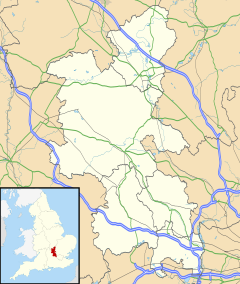world.wikisort.org - United_Kingdom
Clifton Reynes is a village and civil parish in the unitary authority area of the City of Milton Keynes, Buckinghamshire, England.[2] It is about a mile east of Olney. It shares a joint parish council with Newton Blossomville.
This article needs additional citations for verification. (December 2009) |
| Clifton Reynes | |
|---|---|
 Clifton Reynes Location within Buckinghamshire | |
| Population | 178 (2011 Census)[1] |
| OS grid reference | SP903513 |
| Civil parish |
|
| Unitary authority |
|
| Ceremonial county | |
| Region | |
| Country | England |
| Sovereign state | United Kingdom |
| Post town | OLNEY |
| Postcode district | MK46 |
| Dialling code | 01234 |
| Police | Thames Valley |
| Fire | Buckinghamshire |
| Ambulance | South Central |
| UK Parliament |
|
Extent
It is bounded, on the North, by the River Great Ouse, by which this parish is separated from Lavendon and Cold Brayfield; on the East, by Newton-Blossomville; on the South, by Petsoe and Emberton; and on the West, by the latter and by Olney.[2]
Origin of name
The village name comes in two parts: the former name 'Clifton' is Anglo Saxon in origin and means 'Cliff farm', referring to the village's position on a cliff on a bank of the River Ouse. The latter name 'Reynes' refers to the ancient lords of the manor of the village, whose family name this was.[3] In the Domesday Book on 1086 Clifton Reynes was recorded as Cliftone.
Buildings of note

The parish church dedicated to St Mary is (unusually for a Buckinghamshire church) completely castellated: even the gables are embattled. The tower is thought to be Norman;[3] however, the top is later probably 14th century.[3] The majority of the building is of the 13th, 14th and 15th centuries and the nave is unusually tall. Features of interest include the 14th-century font and the medieval monuments of the Reynes family. These include two pairs of wooden effigies; one pair is of Ralph and Amabel de Reynes (ca. 1320–30) and the other is unidentified and slightly earlier.[4]
References
- UK Census (2011). "Local Area Report – Clifton Reynes (E04001251)". Nomis. Office for National Statistics. Retrieved 17 November 2019.
- Clifton Reynes Office for National Statistics
- William Page, ed. (1927). "Parishes : Clifton Reynes". A History of the County of Buckingham. Victoria History of the Counties of England. Vol. 4. London: Constable & Co. Ltd. pp. 316–323.
- Betjeman, J. (ed.) (1968) Collins Pocket Guide to English Parish Churches: the South. London: Collins; p. 126
External links
![]() Media related to Clifton Reynes at Wikimedia Commons
Media related to Clifton Reynes at Wikimedia Commons
Другой контент может иметь иную лицензию. Перед использованием материалов сайта WikiSort.org внимательно изучите правила лицензирования конкретных элементов наполнения сайта.
WikiSort.org - проект по пересортировке и дополнению контента Википедии